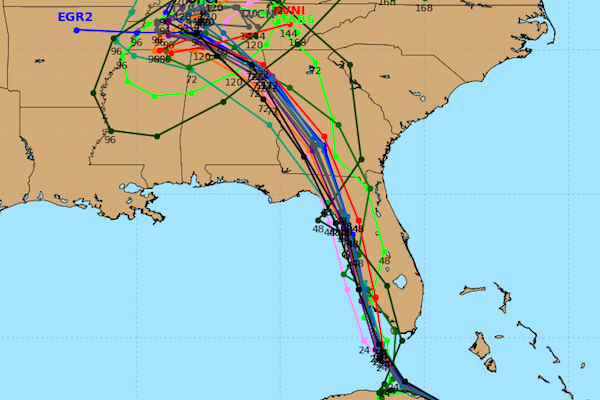
Several of the members predicted that Agatha would regenerate into a tropical storm over the southern Gulf of Mexico’s Bay of Campeche. The black line is the mean of the 31 ensemble members individual ensemble member forecasts are the thin lines, color-coded by the central pressure they predict for Agatha. EDT) Saturday, May 28, run of the GFS ensemble model (GEFS). Track forecasts out to seven days for Agatha from the 6Z (2 a.m. The first hurricane hunter mission into Agatha is scheduled for Sunday afternoon, if an airplane is available. Destructive winds, a large storm surge, and torrential rains of 10-16 inches will all present significant hazards for Mexico. Steering currents favor a track bending to the northeast Sunday and Monday, with landfall in southeastern Mexico occurring Monday afternoon or evening. These favorable conditions are predicted to persist through landfall. Agatha is likely to become the strongest landfalling Pacific hurricane on record so early in the year, as well as the strongest hurricane on record to make landfall so far east along Mexico’s Pacific Coast.Īgatha has been benefiting from very favorable conditions for intensification, with very warm waters of 30-31 degrees Celsius (86-88☏), light wind shear of 5-10 knots, and a moist atmosphere with a mid-level relative humidity of 75%. The National Hurricane Center (NHC) is predicting Agatha to make landfall late Monday near or just east of Puerto Escondido as a top-end Category 2 storm, with top sustained winds of 110 mph. A hurricane warning is in effect from Salina Cruz to Lagunas de Chacahua. EDT Sunday): Agatha is now a rapidly strengthening hurricane, with top sustained winds of 85 mph as of 11 a.m. EDT Saturday, Agatha was located about 215 miles southwest of Puerto Angel, Mexico, moving west-northwest at 5 mph with top sustained winds of 45 mph and a central pressure of 1002 mb. EDT Saturday, May 28, and it is poised to intensify into a rare early-season category 2 hurricane before landfall. Many studies suggests that these " hot towers" may provide clues to intensity changes.Hurricane watches are posted for portions of the southern coast of Mexico as the first named storm of the 2022 eastern Pacific hurricane season, Tropical Storm Agatha, gathers strength in the warm waters about 200 miles offshore. NASA's Tropical Rainfall Measuring Mission (TRMM) and Global Precipitation Measurement (GPM) Mission have microwave instruments that see "through" clouds to reveal towering thunderstorms. Hurricanes are like giant heat engines with many of the processes associated with intensification happening "under the hood." Convection in the eyewall releases heat and is embedded within a complex set of processes that can lead to pressure reduction and wind speed increases. So, what makes intensity forecasting so hard? NOAA estimates that 12- to 48-hour track forecasts have improved by 10-15% because of dropsonde measurements from this altitude. NOAA's Gulfstream-IV aircraft can linger around and in a storm for almost nine hours at heights up to 45,000 feet. Dropsondes are released into the storms to provide in-storm measurements of pressure, wind, humidity, and temperature for the models. Hurricane Hunters carry GPS-equipped instruments called dropsondes. Supercomputing power has increased exponentially, and this drives better model resolution (think more megapixels on your camera), representation of more physical process, and capacity to handle more data.Īircraft are also critical. The European Center for Medium-Range Weather Forecasts (ECMWF) has shown that forecasts of Sandy's track may have been off by hundreds of miles without data from satellites being ingested into the model to properly resolve the state of the atmospheric, including the critical blocking high over Greenland that influenced the "hard left."Īdvances in computing are also driving improvements in hurricane track forecasts. So one must have those conditions not only present, but in relation to each other, to produce the extreme event. It is not something foreign to the system. The tropical cyclone is the product of the pattern that produces it.

WeatherBell Chief Forecaster Joe Bastardi notes in an email: For example, subtle or dramatic changes in the position of features like the Bermuda High can affect where storms like Erika ultimately go. This data is assimilated into weather models to better characterize upper level flow patterns, temperature-moisture profiles and key features.

New satellite capabilities now provide space-time measurements of temperature, moisture, precipitation, sea surface temperature, and upper-level winds. Some factors driving improved track forecasts


 0 kommentar(er)
0 kommentar(er)
